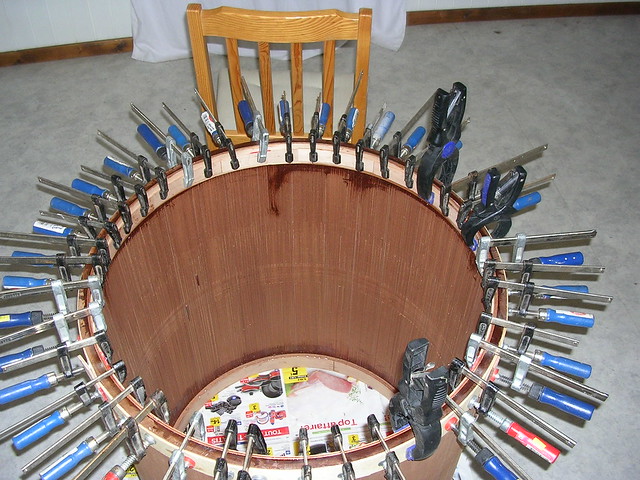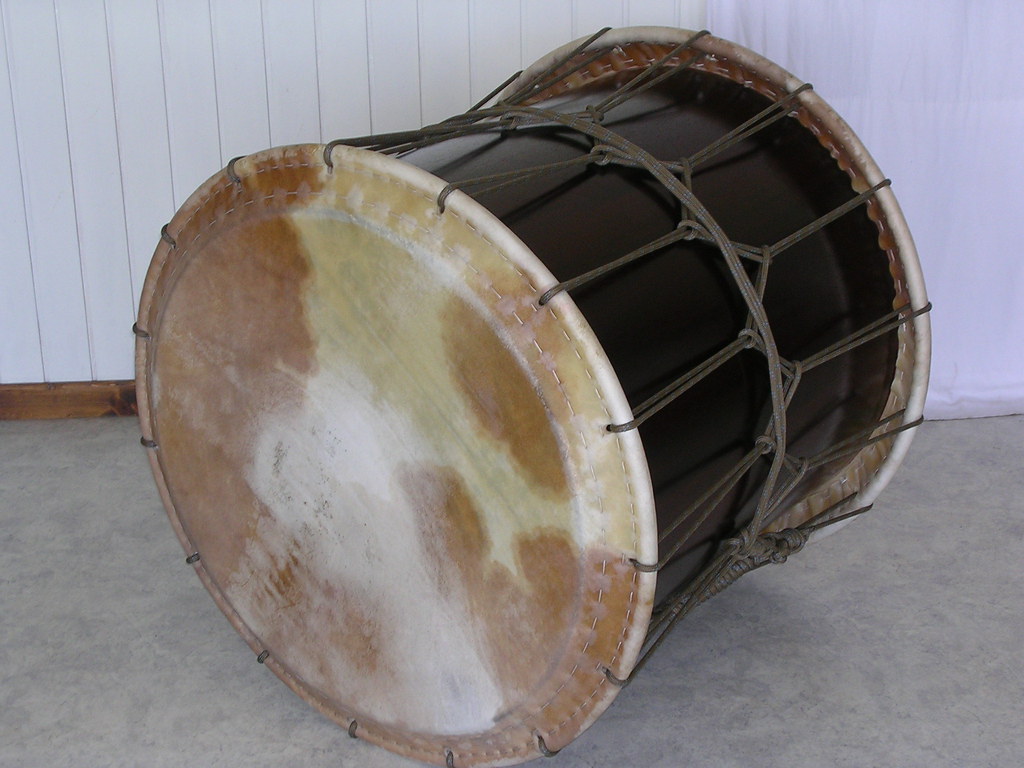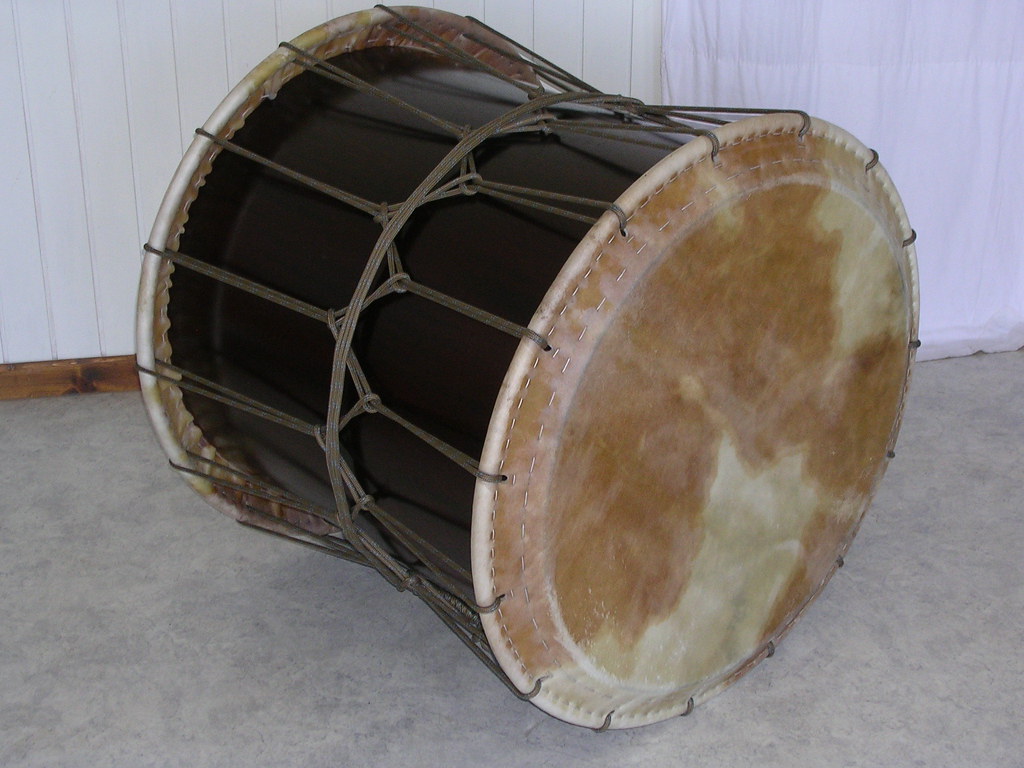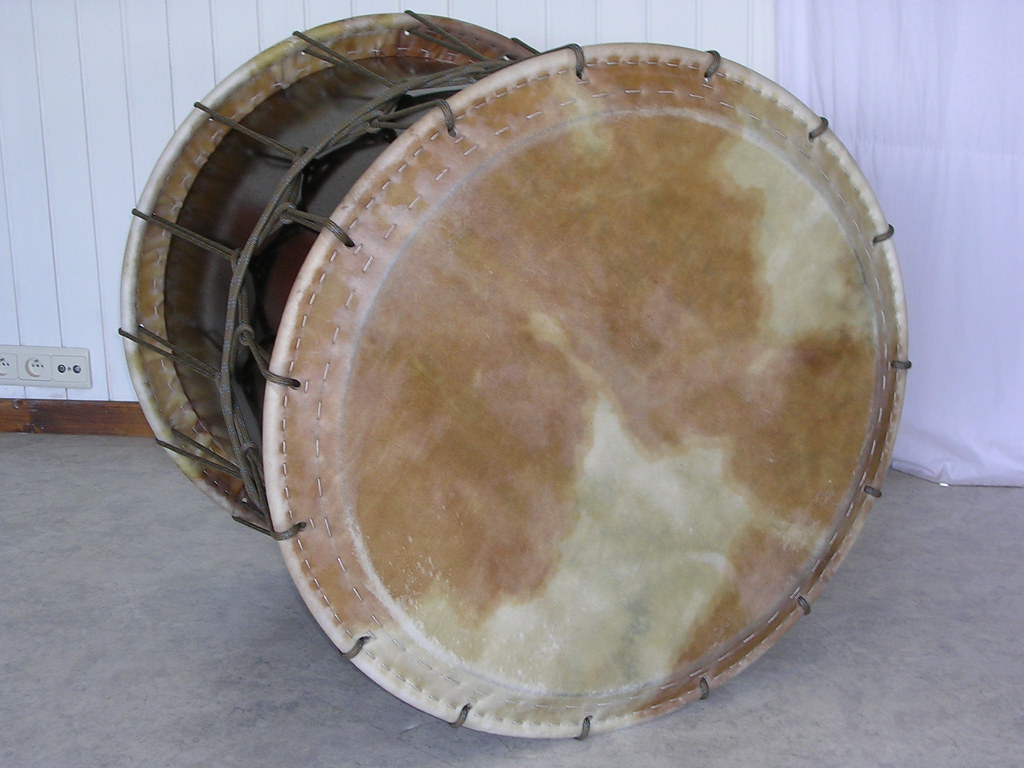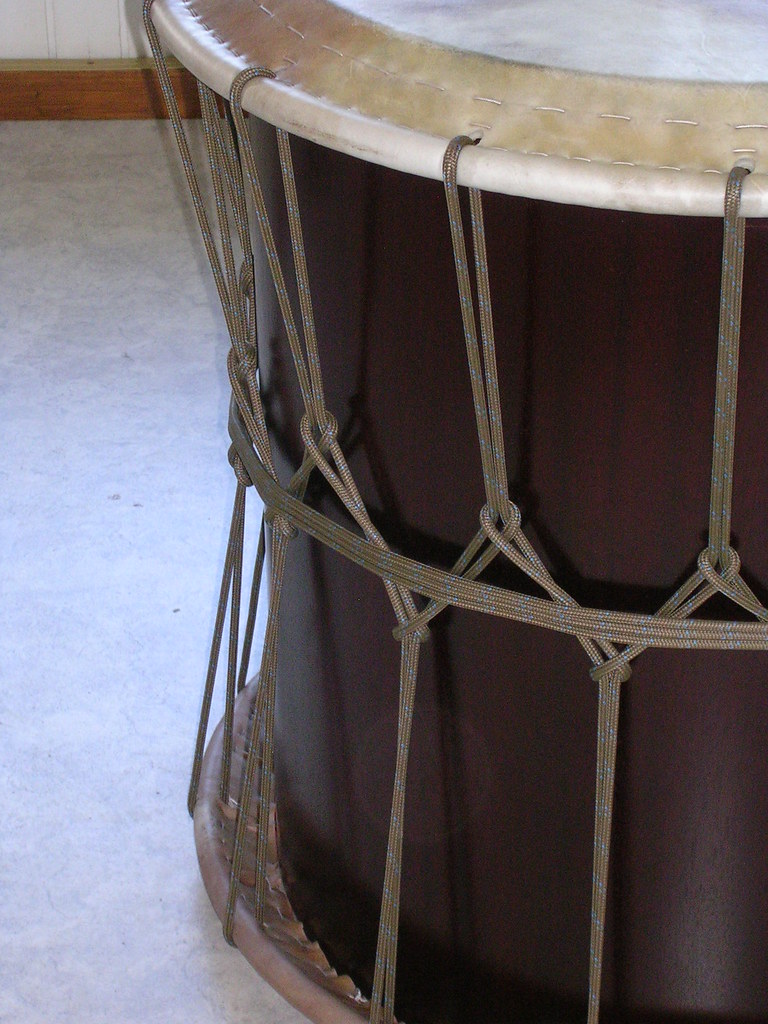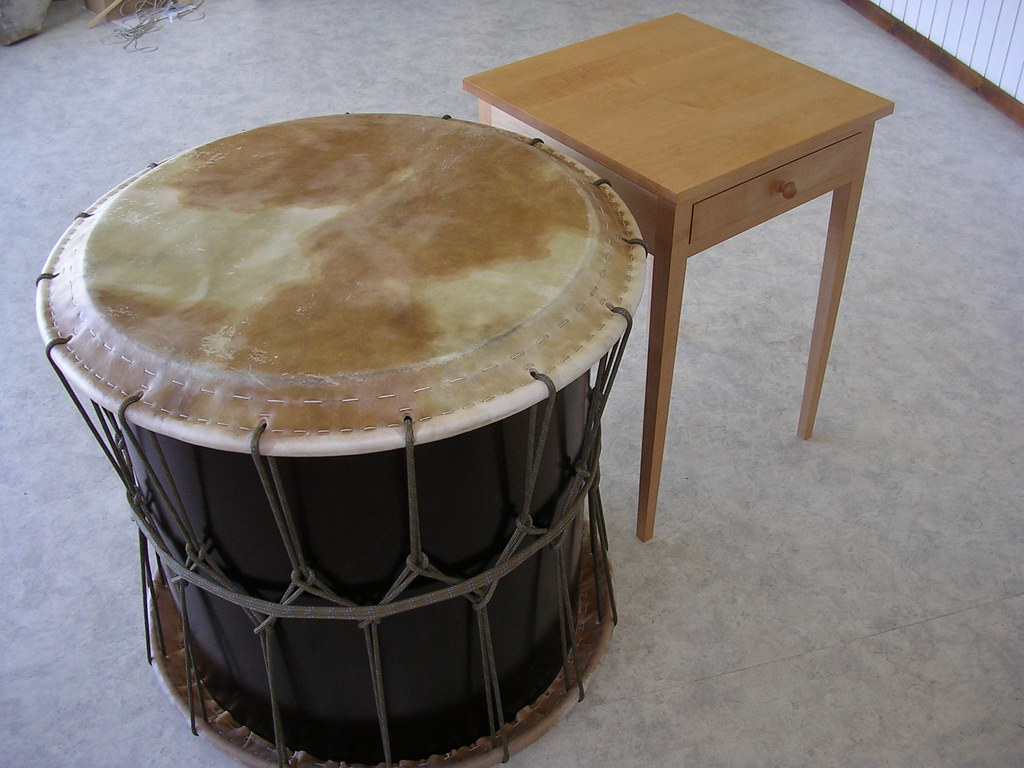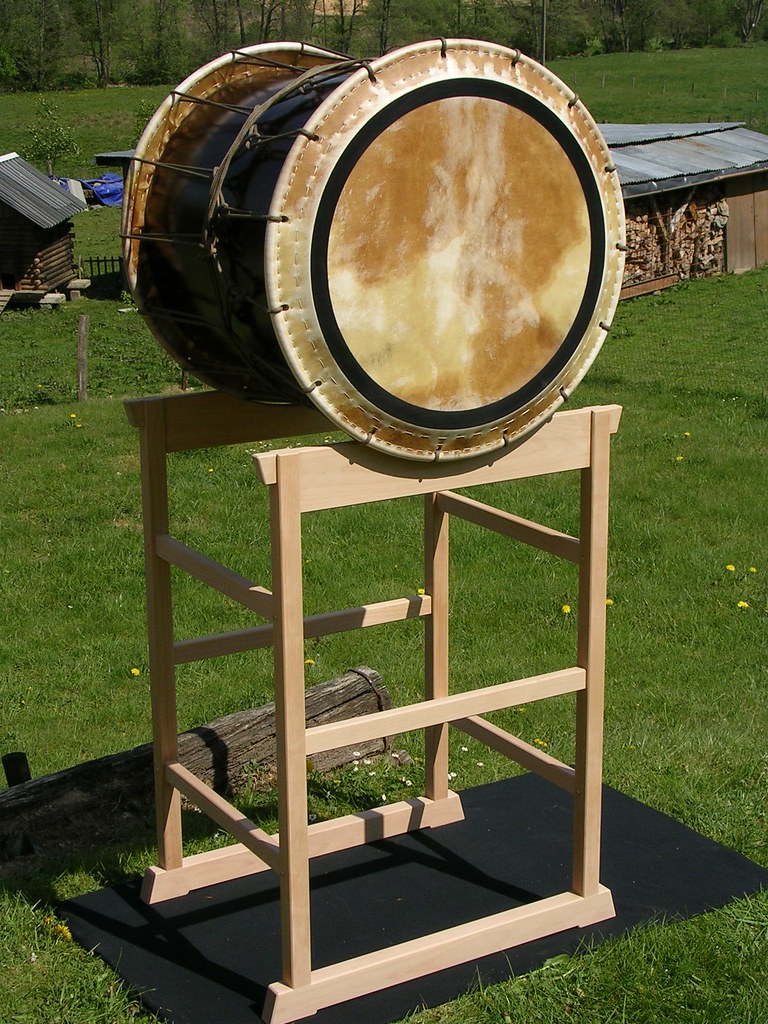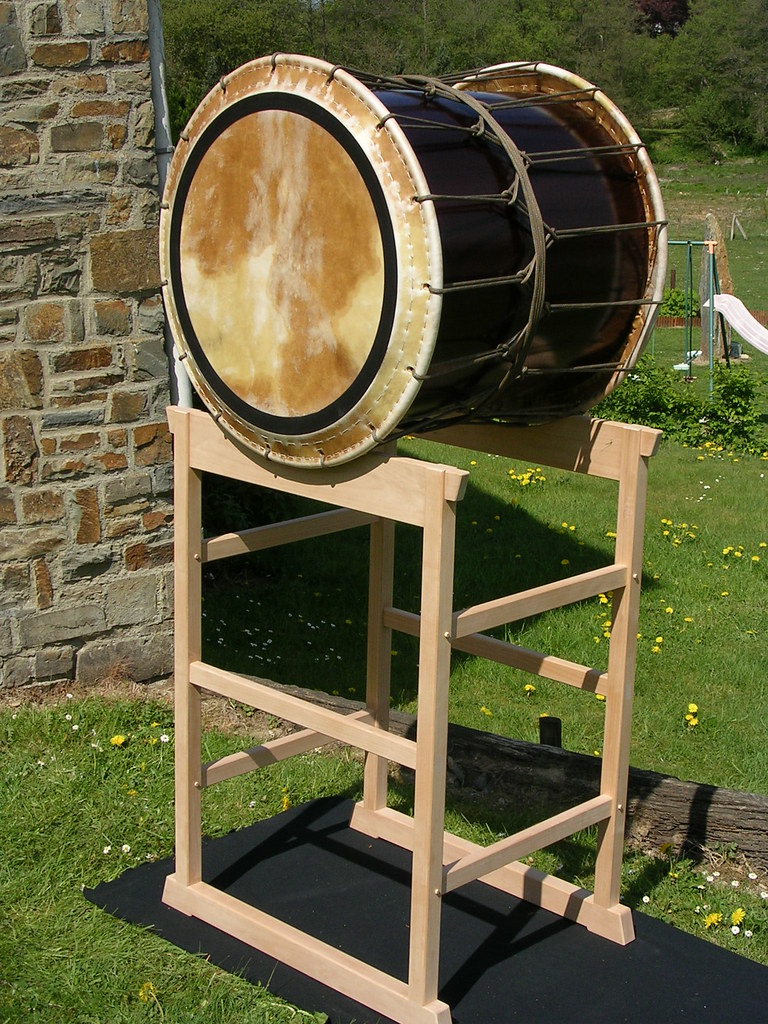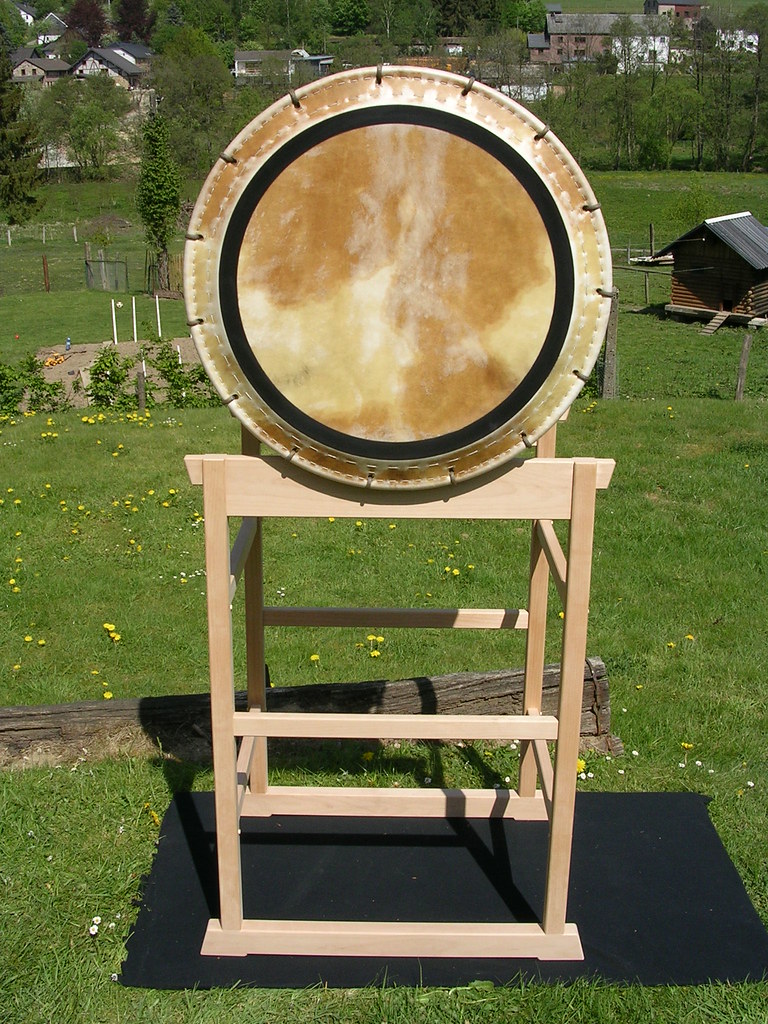Como, don't know what size 550 is, i used 1mm dyneema kite line. 't was a hassle to sew, takes about a day per head. The skin varies from 1.5 to 2mm and poking the needle through is hard work. I use 2 needles, one for poking holes and one for sewing. I know there are special sewing tools for punching holes, but haven't found any near me.
The sound. At the moment i'm working on the overtones, i've reduced them a fair bit already, but needs a bit more. I'm using tape to experiment with this. Around the inside perimeter of the head is a banding of electrical tape, but this is as i said experimental. For the final 'overtone banding' i'll probably use hide glue. Many daiko's are finished with a painted rim on the heads, a i presume this is more than just estetics. Also what i did was make horizontal grooves inside the shell, about 12, so the sound can contract and expand. But it's difficult to get an overal good tone, as the heads move with temperature change. When tensioned more hard, overtones increase drasticly. But when all is good, it sounds really nice, makes a hole room tremble and goes right to your heart or belly

But the drum is new and skins have a breaking in period, so lots of drumming to be done.
I've read the shape of the bearing edges affect tone a lot too. I've made mine on a 45° angle, but i'll try a rounded one on my next one, that should also reduce overtones i think.
The lateral tensioning is to allow for greater flexibility in tuning, and also makes it look really cool 8). The majority of the tension is achieved with the vertical ropes.
At the moment i'm working on a segmented nagado taiko, the most traditional of taikos, shaped like a wine barrel. I'd like to make one out of a single block of wood, but these kind of dimensions are not very easy to find.
I'm working on a stand for it, which is almost finished, which completes the picture even more, pictures when finished.
